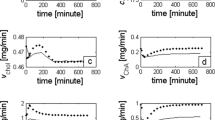Summary
Young hamsters were reared on diets containing butter fat and fat of a high linoleic acid margarine, respectively.
The basal diet without the fat had previously been shown to produce a very high incidence of cholesterol gallstones in young hamsters.
In two trials, in which the fats were compared at the 10% dietary level, the incidence of cholesterol galstones was much less with the diets containing margarine fat than with the diets containing butter fat. The difference was significant with a probability of more than 99%.
In a third trial, in which the fats were compared at the 3% dietary level, the incidence of cholesterol gallstones was also less with margarine fat than with butter fat. Here the difference was significant with a probability of more than 95% but less than 99%.
The superior effect of the margarine fat in counteracting the development of cholesterol gallstones is ascribed to its high content (about 40%) of linoleic acid.
In one of the trials in which the two fats were given at the 10% dietary level the bladder bile was analyzed for cholesterol, bile acids and lipid soluble phosphorus, with the following results:
For the animals receiving the butter fat the concentrations of cholesterol were found to be more scattered and, in more than half of the cases, higher than for animals receiving margarine fat.
The ratios between the molar concentrations of bile acids and cholesterol and between the molar concentrations of lipid soluble phosphorus and cholesterol were also more scattered for animals receiving the butter fat diet, but in more than half of the cases in the butter fat group these ratios were lower than in the margarine fat group.
In the butter fat group the values for the two aforementioned ratios tended to decrease with increasing concentrations of cholesterol.
A more exact correlation of the composition of the bladder bile with the occurrence of gallstones must take into account not only the analytical data summarized above, but, probably, also a previous finding according to which the bile lecithin from hamsters receiving a diet with 10% of the high linoleic acid margarine fat contained much more linoleic acid and correspondingly less oleic acid than did the bile lecithin from hamsters receiving a diet with 10% butter fat.
Similar content being viewed by others
References
Dam, H. andF. Christensen, Z. Ernährungswiss.2, 36 (1961).
Prange, I., F. Christensen andH. Dam, Z. Ernährungswiss.3, 59 (1962).
Rauen, H. M., Biochemisches Taschenbuch, pp. 1210–1213 (Berlin-Göttingen-Heidelberg 1956).
Christensen, F., I. Prange andH. Dam, Z. Ernährungswiss.4, 186 (1964).
Glenn, J. L., F. Christensen andH. Dam, Biochim. biophys. Acta84, 753 (1964).
Author information
Authors and Affiliations
Additional information
Part of this work was supported by a grant from National Institutes of Health, United States Public Health Service (Grant No. A-4964 Met.).
Rights and permissions
About this article
Cite this article
Dam, H., Prange, I. & Christensen, F. Alimentary production of gallstones in hamsters. Z Ernährungswiss 6, 97–106 (1965). https://doi.org/10.1007/BF02019156
Received:
Published:
Issue Date:
DOI: https://doi.org/10.1007/BF02019156




